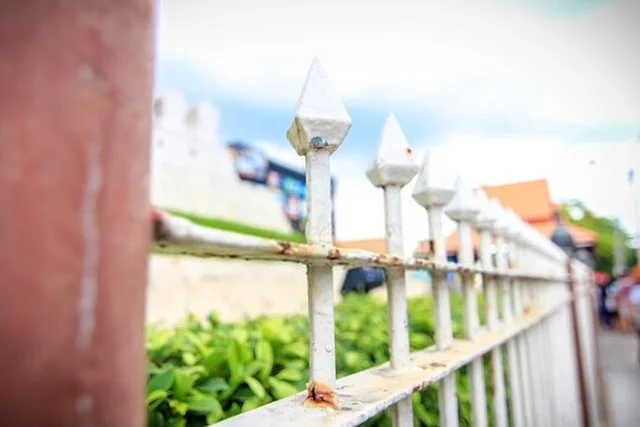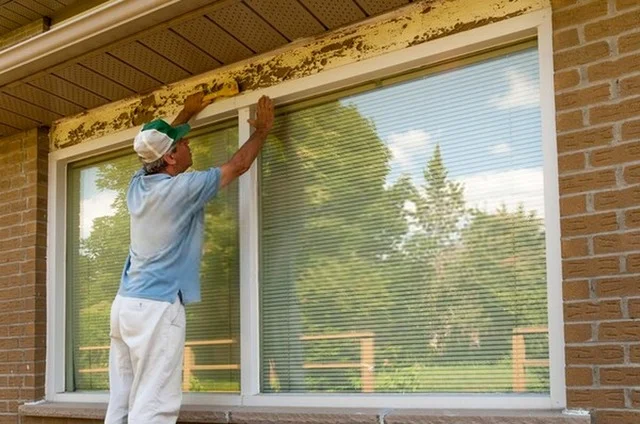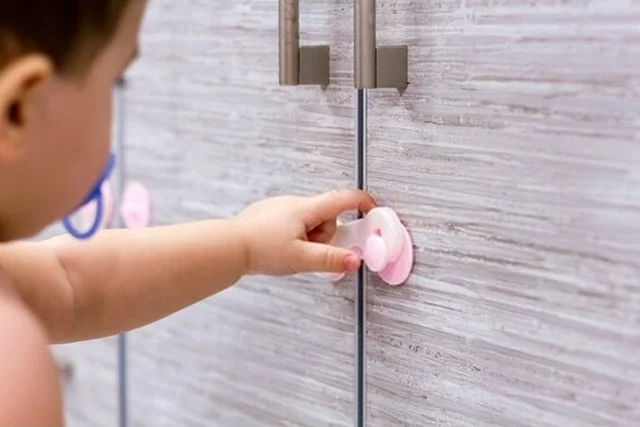
When it comes to the place you live, you want to make it as comfortable and beautiful as you can. The ideal way to ensure your that your home is a s good as it can be is to learn as much as you can about home improvement, and do it yourself. This article should help you learn some tips on ways to improve your house.
When you begin to plan a home improvement project be sure to check with local officials on what permits you need. If you do not do this all the work that is done may be required to be torn down and the project started all over again due to regulation violations.
If you are looking to recreate your dining room living space, you can sand down your old table and refinish it. While this is a lengthy task, a new finish can make an old table look like new again. If you do this, make sure you take your time so it looks great.
If you are hiring someone to perform your home improvement work, make sure to get multiple bids for the project. Although it can be a little time consuming, this process ensures that you are getting the best deal on your project, and it helps you become more familiar with the industry and what to expect from your contractor.
In order to get the most out of your air conditioning and heating system, clean or replace your air filters. Dirty air filters can reduce air flow in your vents, causing your system to work harder to cool or heat your home, therefore using more energy and costing you more money. You can find replacement filters at your local hardware store or even sometimes at your local supermarket.
For a paint finish that really lasts, always sand, strip and prime, prior to applying a fresh coat. Many people think that skipping the preparatory steps of painting will speed up the process, but down the road old paint will peel through the new finish, ruining your paint job and forcing you to strip off yet another layer of paint before repainting again.
You will need to purchase shims prior to installing your kitchen cabinets. They are used to keep all of the cabinets level and straight. They are especially helpful if the kitchen floor is not completely level or the wall is bowed. Shims go up to about 3/8 of an inch to completely flat.
Make sure that your contractor checks on the building code, whenever you make a major change to your house! Often, people will make sweeping changes to their house just because they feel like it or because they feel it will make their home more grand. If you make a change that causes a safety issue, you could end up in major trouble down the line.
Make sure you take some time to actually apply one or two of the ideas that you just read about. Make some notes, get your supplies and equipment, and set aside some time for the action! You can enjoy the work, and you will enjoy the results of your work even more so.

Home Maintenance: For Every Season And Safety Tips
Every season there are home maintenance and safety items that should be done to make certain that a home continues to run properly and will not incur damages in the long run. Many homeowners skip over these basic home maintenance necessities because of busy schedules or sometimes because they are unsure of what tasks to accomplish along the way.
Simply keeping up on these small tasks can ensure that your home will function better in the long run. Seasonal home maintenance will also ensure that you have less overhaul or major expense repairs than homeowners who do not keep up on small season maintenance. These small maintenance items can also protect your home from fire, flooding, or other damages caused by neglect.
To keep from being overwhelmed by the task of home maintenance, it is best to separate these tasks into seasonal chores. For those who live in an area where there are four definite seasons, it is best to follow a logical task schedule that works with necessary maintenance for the different seasons.
If possible, set up a schedule of cleaning and maintenance tasks for each season. Try to maintain that schedule throughout the years. This will ensure that the tasks are not forgotten from one year to the next.
Winter Tips
Tasks that should be accomplished at the onset of every winter season are those that make certain your home will be protected from the cold or the damp weather. Even for those who live in a warmer climate zone, the winter season brings on more rain and chilly weather, so making sure the home is safe from damp and cold is the best bet for the winter season.
Winter tasks should include:
* Removing screen doors and windows and replacing with storm windows
* Checking insulation of pipes in attics, basements and crawl spaces and reinsulating if necessary
* Storing firewood in a dry spot near the home for easy access
* Checking and cleaning the clothes dryer and kitchen exhaust systems and cleaning the clothes dryer duct space
* Checking attic for proper ventilation for running of the furnace
* Checking all the water hoses connecting to appliances, water heater and water softener to make sure there are no cracks or air bubbles. Repair if necessary.
Spring Tips
While winter brought on the cold, the spring brings on the cleaning out season. It also brings on a peak in spring lightening and thunderstorms, so routine maintenance tips should include prevention methods against electrical damage.
Start with spring tasks such as:
* Checking all the homes electrical systems
* Testing all the ground fault receptacles
* Making sure all power surges are in place on the appliances
* Inspecting and replacing necessary smoke and carbon monoxide detectors
* Replacing or repairing any extension cords used in the home that may be damaged or becoming worn
* Replacing the much used furnace filter from the winter
* Checking the roof for possible damages that may not have been noticed in the wintertime to prevent spring rain leaks
* Making sure all gutters are cleaned and all outdoor drainage systems are working properly
Summer Tips
While you can get out and about and enjoy the outdoors during the summer months, it is best to focus summer maintenance on outdoor tasks.
These tasks may include:
* Cleaning and repairing all outdoor power tools, such as the lawnmower, weedeater, or hedge trimmer
* Checking the patio and deck for possible deterioration and fixing and performing any necessary repairs
* Inspecting the roof for possible damage and water leaks if this was not done in the spring time
* Checking the brick, siding and cement areas on the home for shifting in the foundation or cracks or chips in the siding or brick
* Taking time to seal the cracks in the garage floor and driveway
Fall Tips
The fall is a great time to make preparations for the oncoming winter season before it is too late, so focus maintenance on things to keep the home safe and warm during the winter.
These tasks can include:
* Having a professional inspection on the entire heating unit, especially the furnace
* Replace the furnace filter if necessary
* Reexamine the home for potential water leaks in the roof, basement, and even the appliances such as the dishwasher, washer, or refrigerator
* Examine and replace any caulking that has begun to wear away in the doorways, windowsills and even in the bathrooms to prevent winter leaks
Outdoor maintenance that should be performed before it gets to chilly outside:
* Empty out the gasoline and clean out the outdoor power tools before placing in storage for the winter
* Making sure the generator works in case of winter power failure
* Have a professional chimney inspection and cleaning of the chimney flue. Have repairs done before the winter or before using
These tips should help ensure the safety of your home, your property within, and your family. The list may seem overwhelming, but just tackle them one at a time.

Home Furniture Safety Tips to Help Protect Your Family From Accidents and Injury
Thousands of People are treated annually for injuries associated with furniture. The majority of these injuries and deaths are to children. Here are tips you may use to make your household environment safer for yourself and your family.
1. Falls are a leading cause of injuries and deaths in the home. To lessen the likelihood of falls, eliminate clutter, be sure rugs have slip-resistant pads, keep electrical cords out of walkways and clean up spills immediately.
2. Position or Place furniture in low-traffic areas such as corners and sections of the room, out of the range of mobility so that people do not accidentally run into furniture.
3. Shelves should be strategically placed in bedroom and living room areas to limit reaching. They should be low enough to avoid using a step stool but all items should be at eye level in order to find them easily.
4. Make sure furniture is stable and without sharp corners, if possible. This will minimize the chances of injury.
5. Make sure that furniture surfaces are smooth and free of splinters or rough edges. Nails, screws and other joiners should be tight and unexposed.
6. Be careful not to overload the shelves on bookcases. In some cases, it may be a good idea to secure the top portion of the unit to the wall to prevent it from tipping over, especially if children are present in the home.
7. Use the correct size furniture to house your television. Because of their weight, especially the popular larger models, TVs can fall forward if they are not properly supported.
8. Place TVs on lower furniture, as far back as possible. Use angle-braces or anchors to secure furniture to the wall.
9. Make sure that lids have safety latches that prevent the top from falling freely or slamming shut on fingers or a child’s head. Lids also should not lock automatically. If you have an older chest without safety latches, it is recommended that you contact the manufacturer for a replacement latch or remove the lid.
10. Arrange furniture so that outlets are available for lamps and appliances without the use of extension cords. If you must use an extension cord, place it on the floor against a wall where people cannot trip over it. Remove cords from under furniture or carpeting and replace damaged or frayed cords immediately.
11. Remove rugs and runners that tend to slide. Apply double-faced adhesive carpet tape or rubber matting to the backs of rugs and runners. Purchase rugs with slip-resistant backing.
12. Lamps or switches located close to each bed will enable you to get up at night and see where you’re going. Rearrange furniture closer to switches or move lamps closer to beds. Install night lights where possible.
13. Never allow children under 6 years-old on the upper bunk of a Bunk bed. Bunk beds should have guardrails on each side of the top bunk, with the side against the wall or opposite the ladder running the full length of the bed.
14. It’s a good idea to check periodically to make sure all screws, bolts, brackets and other joiners on your furniture are tight and secure.
15. To prevent tempting your children to climb on furniture, do not place enticing objects on tops of tables, dressers or bookcases.
16. You should not place furniture near windows where children can climb or fall out.
When shopping for home furniture, choose quality furniture that is not only comfortable and beautiful, but safe as well.

Hello, lovely readers! I’m Sheila Collins, and I’m delighted to be your trusted guide on this exciting journey of home improvement, design, and lifestyle. As the founder and editor-in-chief of Home Guide Blog, I’m passionate about all things related to homes, and I’m here to share my knowledge, experiences, and insights with you.




